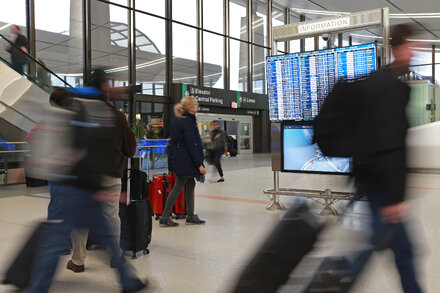A U.S. Customs and Border Protection (CBP) initiative known as ‘Biometric Exit,’ which utilizes facial recognition technology to verify the identity of departing travelers, is experiencing a quiet but significant expansion across U.S. airports, prompting both claims of enhanced security and rising privacy concerns.
The program, initially mandated by Congress as part of the 9/11 Commission Act of 2007, aims to streamline the departure process for foreign nationals and enhance border security by accurately tracking who leaves the country and ensuring their compliance with visa terms. While primarily focused on non-U.S. citizens, the system increasingly interacts with all passengers at the boarding gate.
How Biometric Exit Works
At participating airport gates, passengers step up to a camera system. Their face is scanned and matched against a gallery of images, which may include photographs from their travel documents (like passports or visas) or previous entries into the U.S. The system is designed to perform this verification in a matter of seconds, allowing for a touchless boarding experience.
“Biometric Exit provides a secure, touchless, and efficient way to confirm identities and fulfill a congressional mandate to track the departure of foreign nationals,” a CBP spokesperson stated, emphasizing the program’s role in national security and travel facilitation. “For U.S. citizens, participation is voluntary, and they can request a manual document check at any time.”
Expansion and Mounting Concerns
Despite its growing presence at numerous airports nationwide and its integration with a rising number of airlines, many travelers remain largely unaware of the program’s scope or even its existence until they encounter the facial scanning equipment at their boarding gate. This incremental, often understated rollout has contributed to a sense of unease among privacy advocates and some members of the public.
Civil liberties groups have voiced strong objections, primarily centered on the collection and retention of sensitive biometric data. They argue that the default nature of the system, coupled with often unclear signage, blurs the line between voluntary participation and de facto mandatory compliance, even for U.S. citizens who technically have the option to opt out.
“While CBP assures us of secure data handling and limited data retention, the long-term implications of a vast governmental database of facial recognition data are profound and raise serious questions about potential misuse, data breaches, and scope creep beyond initial intentions,” commented [Fictional Privacy Advocate Name], director of [Fictional Civil Liberties Organization]. “The public deserves far greater transparency and a clear understanding of how their biometric information is being collected, stored, and potentially shared.”
Critics also point to concerns about the accuracy and potential biases of facial recognition technology, particularly for certain demographic groups, and the lack of robust independent oversight. The perceived “quiet” expansion, they argue, bypasses thorough public debate on a program that could significantly impact individual privacy rights.
As the Biometric Exit program continues its integration into more air travel hubs, the tension between governmental security imperatives and individual privacy rights is expected to intensify, challenging policymakers to navigate an increasingly digital and interconnected travel landscape.
Source: Read the original article here.





